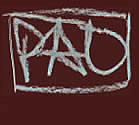

section. A former tailor, his dolls are made from pigment-impregnated rags and plaster.
Children use dolls as objects of transference, interacting with them to work out their social and personal identities. Dolls become their intimate companions, part of a fantasy world where the child can prescribe behaviour and control the relationship. Acceptable as part of a child’s development, these substitute relationships when carried on into adulthood raise very different reactions. Through the legend of Pygmalion and Galatea the concept of creating of the ‘perfect woman’ is explored. Other examples shown include a replica of Oskar Kokoschka’s Alma Mahler doll and images showing the relationship between mannequin maker Lester Gaba and ‘Cynthia’.
Love dolls’, or ‘sex’ dolls, are custom-made, inanimate companions made of flexible silicone and as anatomically specific as required. In her work ‘Still Lovers’, the American, Elena Dorfman, has photographed several men and women posing with their companion surrogates.
The ventriloquist and ‘dummy’ companion, of film and popular entertainment, which can convey ambiguous, sometimes sinister relationships, is also considered. It is traditionally based on culturally recognisable male relationships: the sensible man and his raffish, ‘knowing’ friend. In the 1950s, Edgar Bergen and Peter Brough had great success with their ‘dummies’ Archie Andrews and Charlie McCarthy, keeping their wilder companions under control in some way. Yet it was the ‘dummies’ who were the personalities, who could say the unsayable, behave like a puerile man or precocious boy, and openly criticise the ventriloquist, referring to him as the ‘dummy’.
The exhibition GUYS ‘n’ DOLLS, accompanied by the catalogue of the same title, has been researched and curated by Suzanne Plumb (Royal Pavilion, Libraries & Museums, Brighton & Hove) with additional research by Jackie Lewis and Robert Lamb. The book includes essays by Suzanne Plumb, Jackie Lewis and Dr Juliette Peers (RMIT University, Melbourne). It has been organised by Nicola Coleby and Suzanne Plumb (Royal Pavilion, Libraries & Museums).
Lenders include: Science Museum, London; National Portrait Gallery; Union Centrale des Arts Decoratifs, Louvre; Man Ray Trust; La Specola, Florence; National Museum of Modern Art, Tokyo; exhibiting artists and collectors in the UK, Europe and USA
Brighton Museum & Art Gallery, Royal Pavilion Gardens. Tel: 01273 290900 Tues 10am – 7pm; Wed – Sat 10am – 5pm; Sun 2pm – 5pm. Closed Mon, except Bank Holiday Mondays